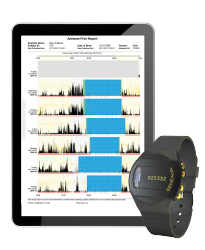News &
Insights
7 April 2025
World Health Day: Healthy Beginnings, Hopeful Futures
A global effort to prioritise the protection of women’s long-term health and well-being is fundamental
Share This Post, Choose Your Platform!

Global Healthcare Challenges for Women and Infants
Women face barriers to healthcare access across the globe, and alarmingly, the WHO estimate that one preventable newborn or maternal death occurs every seven seconds. A global effort to prioritise the protection of women’s long-term health and well-being is fundamental for ending these preventable deaths. Healthcare systems globally need to evolve rapidly to remove barriers to healthcare access for women and newborns.
Digital Wearables in Health Monitoring
Wearable digital technologies allow the measurement of 24-hour physical behaviours, which are key indicators of overall health and well-being. High-resolution wearable accelerometry from ActivInsights offers a convenient and reliable approach for capturing 24-hour physical activity and sleep patterns of women and infants in their natural environment.
Accelerometer-based objective measurements of daily activity and sleep patterns in women and infants correlate with important health outcomes.
Physical Activity and Pregnancy Outcomes
Physical activity is a key contributor to obesity risk and BMI. Studies show that accelerometer-measured maternal physical activity levels significantly impact delivery outcomes. Less active mothers are more likely to require instrumental assisted deliveries or emergency caesareans than their more active counterparts (Morgan 2014).
Maternal BMI is predictive of perinatal outcomes such as the need for induced birth or extended hospital stays post-birth (Morgan 2014). Physical activity and weight gain are modifiable health factors that can be altered through lifestyle changes before or during pregnancy. Wearable accelerometry is a convenient solution for monitoring these daily lifestyle factors that significantly impact both maternal and newborn health, offering opportunities for early, appropriate, and targeted interventions.
Infant Development and Sleep Patterns
Sleep disturbances during pregnancy, which can occur from 10-12 weeks’ gestation (Okun 2013), are associated with complications including preterm delivery, gestational hypertension and heightened risk of caesarean delivery (Palagini 2014), posing risks for both the mother and infants long-term health.
Infant sleeping patterns are also associated with health outcomes. Research shows infant sleep-wake cycles synchronise with gut microbiota development (Mühlematter 2025). Infants with regular eating schedules demonstrate regular sleeping patterns (Mühlematter 2023). Structuring infant feeding times could be a viable and widely applicable approach to improve infant sleep quality and overall health.
Transforming Healthcare for Women and Infants
Research involving 2,082 pregnant women showed that three days of accelerometery reliably measures physical activity levels in pregnant women (da Silva 2019). GENEActiv accelerometers scored 95% for accuracy in detecting infant posture and measuring physical activity (Hewitt 2019).
From a public health perspective, clinicians widely trust these technologies for providing high-quality objective measurements of physical behaviours. Their ease of use offers a low burden for patients and clinicians alike, making them suitable for long-term monitoring in a wide range of patient groups.
References
Rhythms of Early Life: Gut Microbiota Rhythmicity and Circadian Maturation in Infants (biorxiv.org)
Objective measurement of tummy time in infants (0-6 months): A validation study – PMC (nih.gov)


